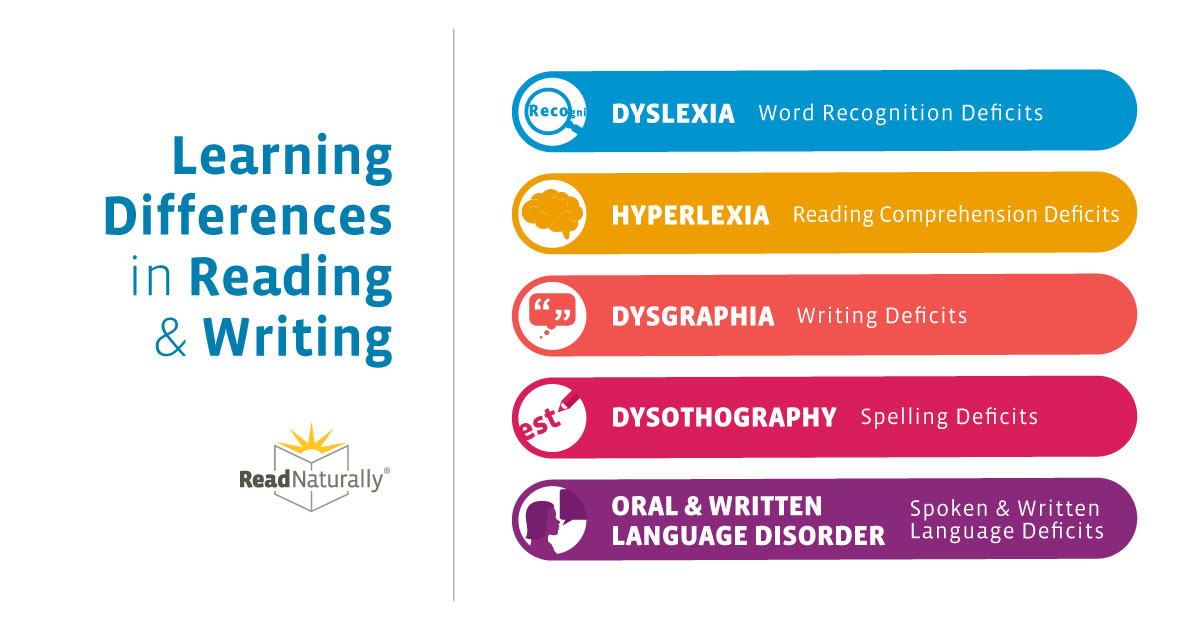.jpg)
America has been celebrating Disability Pride Month every July ever since passing the Americans with Disabilities Act (ADA) on July 26, 1990. Recognizing and celebrating individuals with disabilities should be an everyday, every-month practice, but we appreciate having a calendar month dedicated to this work—especially since helping students with disabilities and learning differences is a big part of what we do here at Read Naturally.
Specifically, our products support students who struggle with reading, writing, and spelling. Many students have difficulty in these areas, but general descriptions do not necessarily point teachers toward the specific support these students need. When teachers and students understand what, specifically, is causing challenges, they can proceed with a targeted intervention. Sometimes, students struggle but do not have an identified disability or learning difference. Other times, there is an underlying disability such as dyslexia at play. Students in both groups have the ability to become confident and skillful readers, writers, and spellers.
So, what are the most common learning differences in reading and writing? Below you will find descriptions of the types of deficits that may require targeted intervention. This content is paraphrased from the American Speech-Language-Hearing Association website. Please note that “deficits,” “disabilities,” and “disorders,” are all used to describe these learning differences. We are sensitive to the fact that people have different preferences for this terminology, so please substitute the words that feel most respectful and appropriate to you.
Word Recognition Deficits/Dyslexia
Students who have difficulty reading despite instruction but who do not have coexisting neurological differences may have word recognition deficits. This is also called dyslexia. A person with word recognition deficits may have difficulties with accurate and/or fluent word recognition and poor spelling.
Reading Comprehension Deficits/Hyperlexia
Reading comprehension deficits are sometimes referred to as hyperlexia. Individuals with this learning difference have problems in listening and reading comprehension. They struggle with word recognition skills; reading fluency; and social, cognitive, or linguistic skills.
Dysgraphia
Dysgraphia refers to difficulty with writing. Two common forms of dysgraphia include the following:
-
Writing Process Deficits
Writing process deficits are problems with the cognitive–linguistic aspects of writing. This involves difficulty with planning, drafting, reflecting on writing, revising, editing, and discourse. -
Writing Product Deficits
Writing product deficits involve difficulty organizing and adequately expressing thoughts in writing; difficulty constructing grammatically correct sentences; limited written fluency; syntactic problems; word choice limitations; and numerous words spelled incorrectly.
Spelling Deficits/Dysorthography
Deficits in spelling are sometimes called dysorthography. Such deficits involve difficulty with encoding phonological information. Spelling deficits include difficulty representing the phonological structure of regularly spelled words; difficulty remembering and reproducing the patterns of irregularly spelled words; lack of morphemic awareness in spelling; and difficulty spelling words correctly in sentences.
Spoken and Written Language Deficits
Deficits in spoken and written language may be referred to as an oral and written language learning disability. This may result in difficulty pronouncing complex words; reading fluency; word recognition/decoding; spelling; and language comprehension.
Realizing just how many learning differences in reading and writing exist and what they are is the first step toward helping students overcome these challenges. Next, teachers need to plan how to assess their students and how to intervene. The ASHA website is a wonderful resource for specific assessment and intervention information.
Read Naturally programs are designed to help students with learning differences overcome their challenges. Please see detailed information here on how our programs specifically support students with dyslexia. Click here for information on how our programs support students’ needs in phonemic awareness, phonics, fluency, vocabulary, comprehension, and spelling.

 Share your student’s success story—nominate him or her for our Star of the Month award. Win a Barnes & Noble gift card for the student and a Read Naturally gift certificate for your class!
Share your student’s success story—nominate him or her for our Star of the Month award. Win a Barnes & Noble gift card for the student and a Read Naturally gift certificate for your class!
Post a New Comment